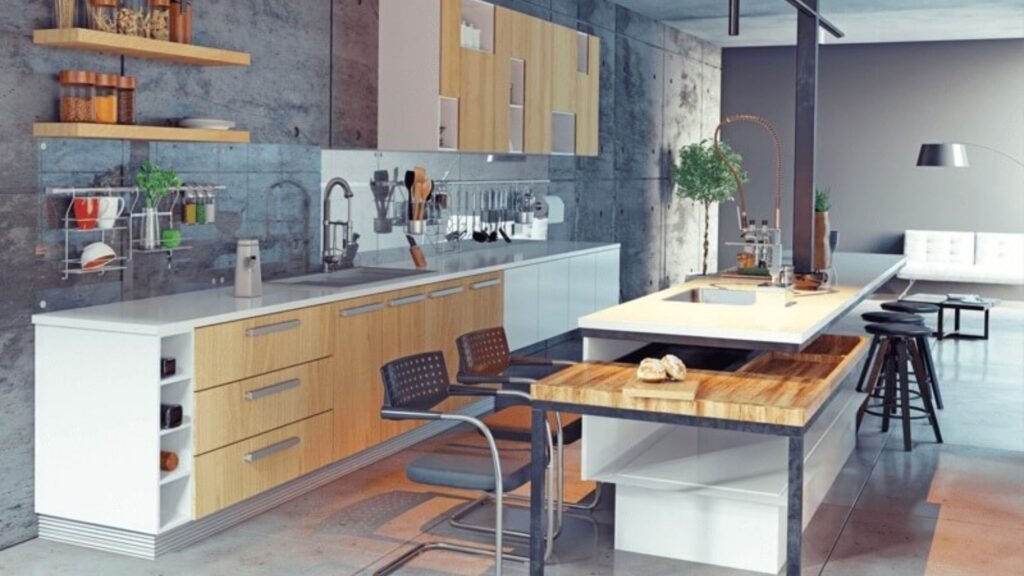How to Blend Open and Closed Cabinets
- By -Tonny Jack
- Posted on
- Posted in Cabinets
Blending open and closed cabinets can be an effective way to create a balanced, functional, and aesthetically pleasing space. It allows you to showcase your favorite items, such as decorative pieces or stylish dishware, while also keeping everyday essentials out of sight for a clutter-free environment. Whether you’re designing your kitchen, bathroom, or living room, mixing open and closed cabinetry can add depth, visual interest, and practicality to your home. In this article, we’ll explore how to successfully blend open and closed cabinets in your design.

Determine the Function of Each Cabinet
The first step in blending open and closed cabinets is determining their intended functions. Open cabinets are ideal for displaying items you want to access regularly or showcase, such as decorative pieces, beautiful dishes, or plants. They work well in spaces where you want to create a curated look or make items easily accessible.
Closed cabinets, on the other hand, are perfect for storing items that you don’t need to display or want to keep hidden, such as cleaning supplies, cookware, or personal items. By assigning a specific function to each cabinet type, you can create a more organized and practical space while balancing open and closed storage.
Use Open Cabinets for Decorative Items
Open cabinets are perfect for displaying decorative pieces that can enhance the overall aesthetic of the room. You can use these cabinets to store books, framed art, ceramics, or unique accessories that reflect your personality and style.
When choosing what to place in open cabinets, be mindful of how you arrange the items. Avoid overcrowding shelves, and instead, opt for a curated collection that complements the color scheme and theme of the room. Mixing different textures, heights, and shapes can also add interest and balance to your display.
Keep Closed Cabinets for Clutter-Free Storage
Closed cabinets help maintain a clean, clutter-free environment. Use these cabinets for items that don’t need to be seen or accessed frequently, such as pantry staples, cleaning products, or personal care items. In a kitchen, closed cabinets can hide appliances, pots, and pans that are used less often but still need to be easily accessible.
In bathrooms or home offices, closed cabinets can conceal toiletries, towels, and office supplies. Keeping these items behind closed doors ensures that the space remains tidy and visually serene, while the open cabinets provide interest and accessibility for frequently used items.
Create a Flow Between the Two Cabinet Types
When blending open and closed cabinets, aim for a natural flow between the two. Avoid placing open and closed cabinets next to each other in a way that feels jarring. Instead, arrange them so that there’s a smooth transition between the two. For example, you can position open cabinets above closed cabinets or mix them across a long wall to create visual balance.
Consider the layout of your space and how the cabinets will be used daily. In kitchens, for instance, you can place closed cabinetry around the sink and cooking area for a more practical design, while incorporating open shelving above the countertop to display items that add character. This layout maximizes functionality while keeping the overall design cohesive.
Balance Colors and Materials
To make the combination of open and closed cabinets feel seamless, balance the materials and colors used throughout the room. For example, if your closed cabinets are made from wood with a matte finish, consider using open shelves with similar wood tones or complementary finishes like metal or glass. This consistency helps unify the design and makes the transition from one cabinet type to another feel natural.
If your space features a more modern design, you can experiment with a mix of materials, such as wooden closed cabinets paired with sleek metal or glass open shelves. If you prefer a more traditional look, stick to wood finishes for both types of cabinets but vary the wood stains or textures for contrast.
Conclusion
Blending open and closed cabinets in your home can enhance both the aesthetics and functionality of your space. By strategically using each type of cabinetry for its intended purpose, balancing colors and materials, and considering factors like lighting and hardware, you can create a cohesive and visually appealing design. The key is to find the right balance between showcasing your favorite items and keeping everyday essentials organized and hidden. With thoughtful planning, open and closed cabinets can seamlessly work together to enhance your home’s overall design.



